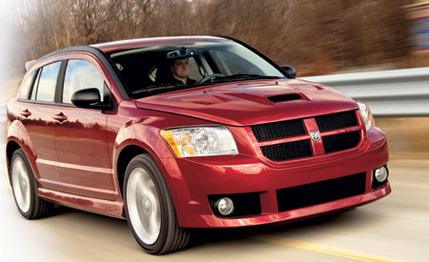 First Drive Review
First Drive Review
Sequels are tricky. You could ask anyone in the movie business. Hey, the original was a hit - let's repackage and play it again. The business plan looks like a no-brainer, but all too often it turns out to be just that, and the redux version tanks.
The original SRT4 was one of the first creations of the Chrysler Group's Street and Racing Technology go-faster shop, a high-performance edition of the mild-mannered Dodge Neon. We referred to it as the Frankeneon in our December 2002 test, and that still sums it up. During its three-year run, the output of its 2.4-liter turbocharged and intercooled four climbed from 215 in the first edition to 230 horsepower, with even more available via the various aftermarket upgrade kits available through Mopar. It was capable of 0-to-60-mph times in the mid-five-second range and could cover a quarter-mile in just over 14 seconds, and in three years of production, Dodge sold more than 25,000 of them.
"The original program plan projected 10,000," says Herb Helbig, SRT's senior manager of vehicle synthesis and chassis design. "We sold two-and-a-half times that many."
So when the Caliber replaced the Neon, an SRT4 sequel was not only an attractive business proposition, it was almost mandatory. But the Caliber is obviously not a Neon, and the differences go well beneath its daring new duds. So the sequel question is germane here. Will this SRT4 II be another hit with the tuner tribe? Or will it be another Caddyshack II.
More on that later. First, let's take a look at the hardware.
The core of the '07 Caliber SRT4, like its predecessor, is a 2.4-liter turbocharged and intercooled four, transversely mounted and driving the front wheels. But that's where the likeness ends. The hurry-up Caliber is driven by a boosted version of an all-new, all-aluminum DOHC 16-valve four (the previous engine had an iron block), developed as a joint venture among DaimlerChrysler, Hyundai, and Mitsubishi, called GEMA, for Global Engine Manufacturing Alliance. It has a production facility in Dundee, Michigan, and the initial DaimlerChrysler yield is a three-engine family - 1.8, 2.0, and 2.4 liters.
The biggest of the trio was the obvious starting point for this exercise, and according to Pete Gladysz, senior manager for SRT powertrains, adapting the GEMA engine for high output didn't require any really dramatic departures from the stock engine's basic components. There are new Mahle pistons, designed for a lower stock compression ratio (8.6:1 versus 10.5:1), forged steel connecting rods, valves designed for higher operating temps, heftier bottom-end bearings, oil squirters to keep the con rods and pistons cool, and an external oil cooler.
That sounds like a lot, but none of it affects the engine's basic architecture, and the block, head, crank, cams, and variable-valve-timing hardware (intake and exhaust) are all standard GEMA bits.